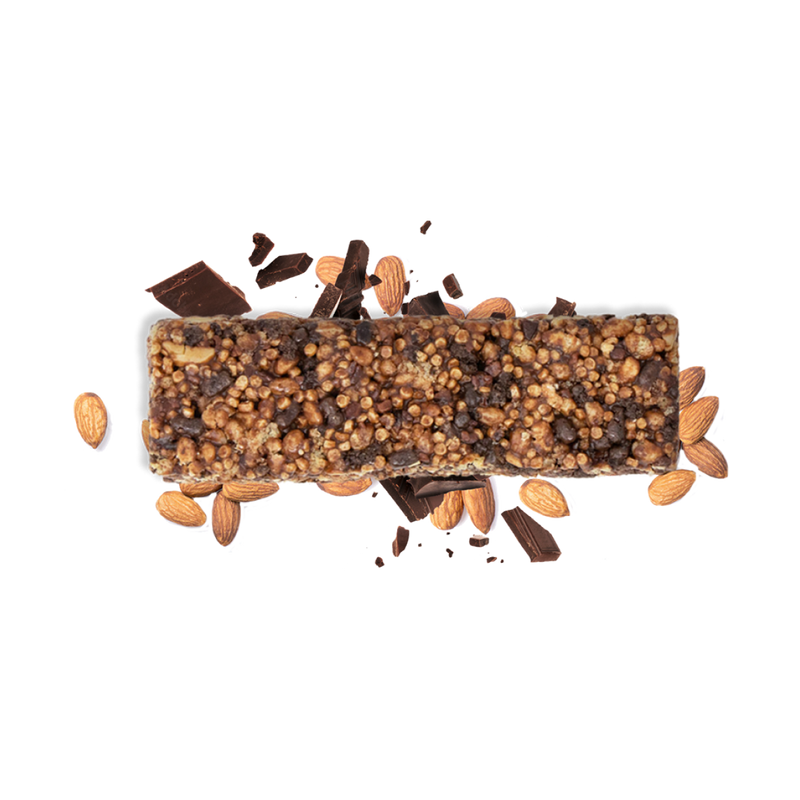Skipping rope is a training tool that may seem “oldschool” but which nevertheless has many advantages and is an excellent way to strengthen your cardio. Dusted off with the pandemic, this sport allowing intensive training of all muscle groups without leaving your home, is making a real comeback. Besides being fun, jumping rope can provide a host of serious athletic benefits, from coordination to explosive power to agility. With the increase in teleworking, jumping rope can allow us to stay active or even serve as a real athletic workout.
If you are not yet convinced, we will explain everything there is to know about jumping rope, and our best advice for practicing this sport as best as possible.
What is jump rope?
Jumping rope is a sport that involves swinging a rope around your body and jumping over it as it passes under your feet. It's a form of cardiovascular training since the constant movement elevates your heart rate.
While the basic concept is simple, there are many variations of jumping and using the jump rope, depending on your fitness goals. Here are some examples of uses:
- warming up or cooling down
- alternating with other exercises for a HIIT workout
- to improve your agility or speed, by jumping rope quickly.
- others practice double-unders (jumping and swinging the rope under your feet twice before landing again) to develop explosive power.
- others develop their creativity and let off steam by experimenting with more unique dance moves.
What posture and technique should you adopt with a jump rope?
This should start with good posture: think shoulders down, keep your chest up, back straight and look straight ahead. Position your arms and elbows on the midline of your body, approximately 5 cm from your ribs, with your hands pointing outwards and engage your abs. Then, with a handle in each hand, rotate the rope in small circles with your wrists. It's best to avoid having your legs too straight, keep a slight bend in your knees, stay on the balls of your feet and only jump high enough to clear the rope - not too high. By keeping your jumps low to the ground, you will be able to jump both faster and longer because you won't be expending excess energy.
For footwork there are several variations: start with the basics, namely the basic bounce (both feet jump in unison once with each rotation of the rope) then try the basic double bounce (two jumps). You can also do the boxer shuffle, which is basically a short jog in place where you shift your weight from side to side.
Once you have mastered your footwork, focus on your rhythm. Listening to music and trying to follow the rhythm can help you establish a good rhythm. You can also choose a fast-paced song and try jumping to it to improve your speed.
If you're new to jumping rope, make sure you take it easy. Otherwise, you could increase your risk of overuse injuries. Start with 30 seconds of jumping interspersed with equal rest periods. Gradually increase the duration of the interval. Because jumping rope is a cardio and high-impact activity, talk with your doctor first if you have known heart problems or a history of injury.
How to get started with jumping rope as a beginner?
You don't need any basic skills to jump rope. All you need is:
- a rope of appropriate size
- a suitable surface,
- comfortable clothes
- a little know-how on the right movement to adopt.
To make sure your rope is the right size, grab a handle in each hand, place one foot in the middle of the rope and pull the handles toward your chest so they are level: if the top of the handles reaches your armpits, your rope is correctly sized. If they are too short, you need a longer rope. If they are too long, you can adjust the length either by playing with the locking device that is inside the handle (many jump ropes have this) or by tying a strong knot under the handles on either side rope.
Avoid jumping rope on hard surfaces like concrete or asphalt, as these can be brutal on your joints. Surfaces that are too soft, like grass and sand, are also not great because they don't provide enough kickback and support. The ideal is to jump on a mat: there are specialized skipping rope mats but you can simply use a thin yoga mat. This support helps reduce the impact on your joints. You can also jump on wood or any type of gym floor.
As for clothing, sneakers that support your foot properly and comfortable clothing that is not too loose (so as not to restrict your movement) will be perfect.
What are the benefits of jumping rope? What results can you expect from skipping rope?
-
An effective cardio workout
If you're looking for an effective cardio option, jumping rope is one of the best exercises you can do. This helps get your heart rate up very quickly, because it involves many different muscle groups working together at the same time.
Jumping rope is a high intensity activity. But one minute of vigorous-intensity activity is equal to two minutes of moderate-intensity activity (such as brisk walking or tennis) in terms of health benefits (for example, reduced risk of heart disease and diabetes).
A 2013 study found that students who did 10 minutes of skipping rope a day for six weeks improved their cardiovascular fitness as much as students who spent 30 minutes jogging during the same period.
Incorporating jump rope into your workout will allow you to get the same benefits as moderate-intensity activity in about half the time.
-
Burn calories.
Jumping rope can burn 200 to 300 calories in 15 minutes. This is more than other continuous cardio exercises, such as running or cycling.
Since most of your major muscle groups work when you
Skipping rope exercise is considered to cause a state of thermogenesis – it creates a lot of heat in the body. Your body needs to burn more fuel to produce this energy, so it burns a lot of calories.
It can be a good help to lose weight or eliminate cellulite on the thighs by combining this sport with a healthy diet.
-
Improve coordination
Jumping rope requires a lot of coordination. Your hands, feet, and sometimes even your eyes all have to work together to make sure you do the movement correctly, jump over it at the right time, and then repeat the pattern at a steady cadence. This high level of coordination may seem very difficult at first, but stick with it and you will see your basic skills improve.
-
Body strengthening
Skipping rope strengthens the entire body. We engage our whole body from head to toe. The movement particularly targets your legs (calves, quadriceps, hamstrings, foot muscles and ankles). But it also aims to strengthen your torso, stomach and abs but also your biceps and shoulders. The advantage of the rope is that the movement happens quite naturally without having to think about engaging all of these body parts. We work on physical endurance in its entirety.
-
Increase agility and balance
Skipping rope involves developing good footwork, working on balance and strengthening the ankles and therefore agility. This ability is found in other sports that require a lot of movement and changing direction quickly such as boxing, basketball or volleyball.
A small study of young soccer players concluded that jumping rope as part of a regular training program improves balance (as well as motor coordination). This is because when you jump rope, you need to reestablish your balance between each jump, and you also need good balance to be able to jump again effectively. You can also do certain jump rope exercises, such as jumping on the ball of one foot or jumping from side to side, to further challenge your balance.
-
Increase bone density
Jumping rope can help build bone density due to the impact of jumping. Bone density tends to decrease with age, making you more prone to fractures. By building bone density through activities like jumping rope, you can reduce your risk. If you already have osteoporosis, it's best to ask your doctor first before starting an exercise such as jumping rope, as the high impact can be harmful to already weakened bones.






















